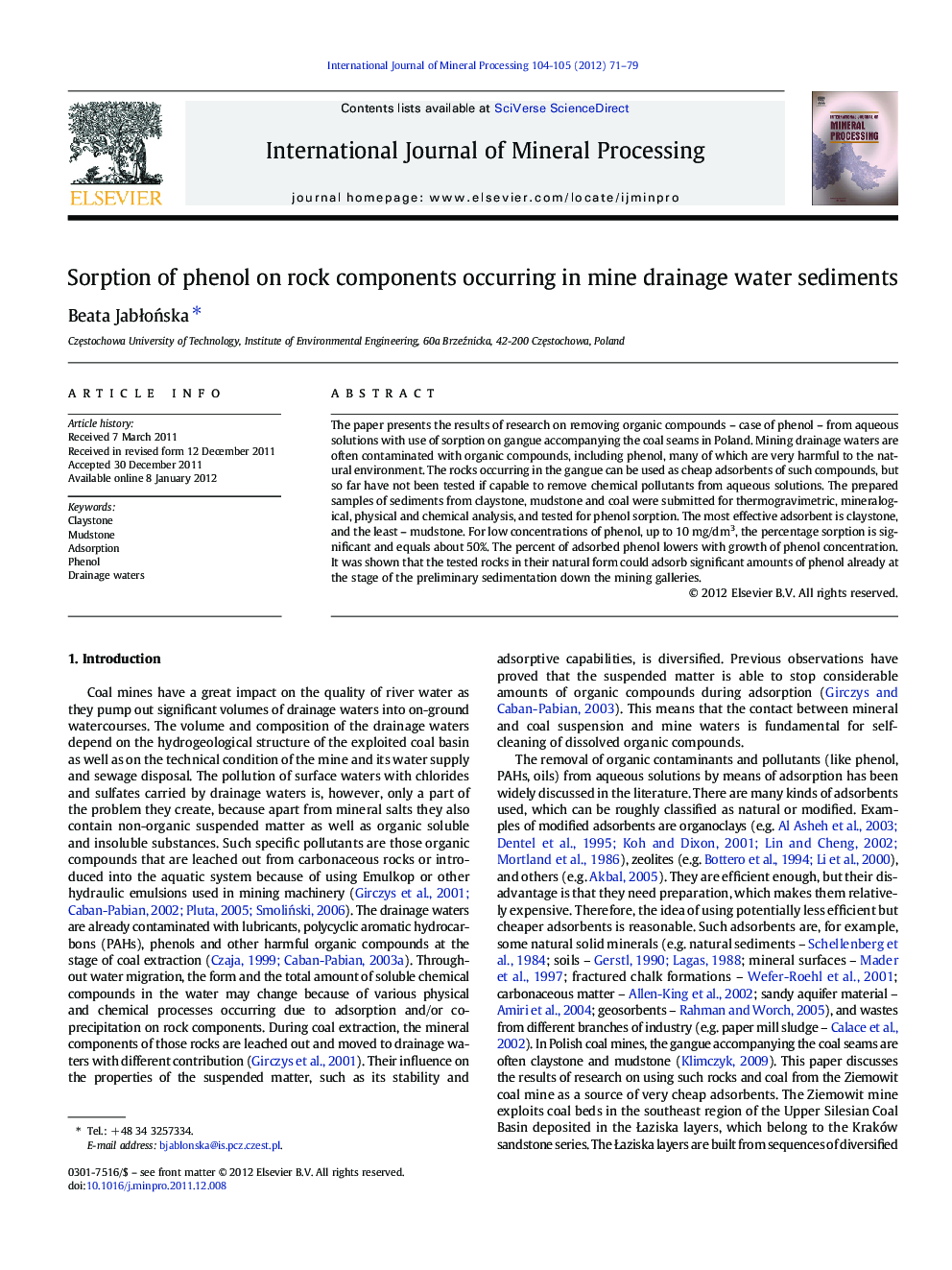| Article ID | Journal | Published Year | Pages | File Type |
|---|---|---|---|---|
| 214238 | International Journal of Mineral Processing | 2012 | 9 Pages |
The paper presents the results of research on removing organic compounds – case of phenol – from aqueous solutions with use of sorption on gangue accompanying the coal seams in Poland. Mining drainage waters are often contaminated with organic compounds, including phenol, many of which are very harmful to the natural environment. The rocks occurring in the gangue can be used as cheap adsorbents of such compounds, but so far have not been tested if capable to remove chemical pollutants from aqueous solutions. The prepared samples of sediments from claystone, mudstone and coal were submitted for thermogravimetric, mineralogical, physical and chemical analysis, and tested for phenol sorption. The most effective adsorbent is claystone, and the least – mudstone. For low concentrations of phenol, up to 10 mg/dm3, the percentage sorption is significant and equals about 50%. The percent of adsorbed phenol lowers with growth of phenol concentration. It was shown that the tested rocks in their natural form could adsorb significant amounts of phenol already at the stage of the preliminary sedimentation down the mining galleries.
► Adsorptive capabilities of selected waste rocks from coal mining were tested. ► Claystone is a good absorbent of organic substances occurring in mine drainage waters. ► Claystone is a more efficient adsorbent than coal, and coal – than mudstone.
